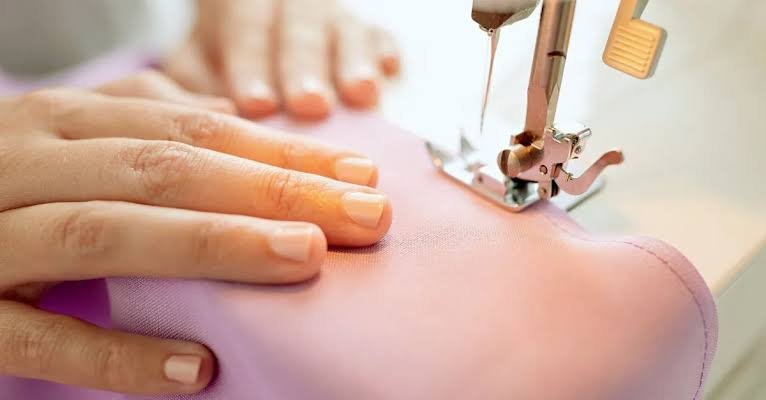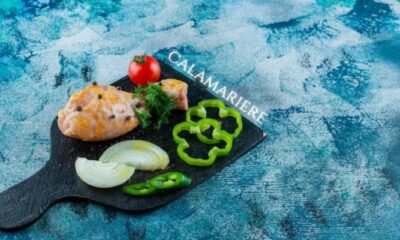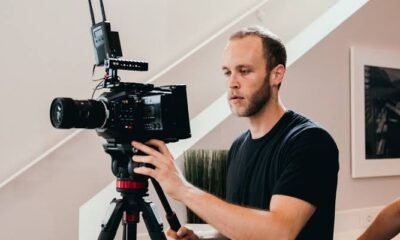Blog
Nahttypen Explained: A Comprehensive Guide for Sewing

What Are Nahttypen?
Definition and Purpose
The term Nahttypen, translated from German, means types of seams. In sewing, a seam is the method by which two or more layers of fabric are held together. These can differ in strength, appearance, flexibility, and purpose.
Importance in Sewing and Textiles
Seams do more than join fabrics—they determine the final product’s durability, comfort, and aesthetics. Each nahttyp (seam type) has a specific function depending on the material and usage.
Why Understanding Nahttypen Matters
Impact on Durability
The right seam ensures your garment holds up through wear and washing. Heavy-duty fabrics need reinforced seams like flat-felled or safety seams.
Aesthetic Influence
Some seams are invisible; others are decorative. A Ziernaht (decorative seam) adds flair, while a Blindstich (blind stitch) disappears into the fabric.
Industry Standards
In industries like fashion, automotive, or furniture, seam types are standardized to ensure product quality and longevity.
The Top 10 Most Common Nahttypen
1. Geradstichnaht (Straight Stitch Seam)
The most basic and widely used seam, ideal for light to medium-weight fabrics.
2. Kappnaht (Flat-Felled Seam)
Used for strength and durability, commonly seen in jeans and sportswear.
3. Französische Naht (French Seam)
Perfect for delicate fabrics like chiffon or silk. This encloses the raw edge within the seam.
4. Overlocknaht (Overlock Seam)
Provides a clean finish and is used for stretch fabrics. It prevents fraying and gives professional results.
5. Zickzacknaht (Zigzag Seam)
Flexible and ideal for stretch fabrics. Also useful for reinforcing buttonholes and preventing frays.
6. Doppelnaht (Double Stitch Seam)
Used for visible, strong seams in activewear or outerwear.
7. Saumnaht (Hem Seam)
Found at garment edges, hems give a finished and refined look.
8. Ziernaht (Decorative Seam)
More aesthetic than functional. Used in fashion for style detailing.
9. Blindstichnaht (Blind Stitch Seam)
Invisible from the front. Used in formalwear, curtains, and fine garments.
10. Sicherheitsnaht (Safety Seam)
Combines a straight and overlock stitch for extra security, especially in high-stress areas.
Choosing the Right Nahttyp for Your Project
Fabric Type
Heavy materials like denim require strong seams like the flat-felled seam. Light or sheer fabrics suit the French seam.
Intended Use
Functional use (like sportswear) needs durability, while fashion garments may need decorative or invisible seams.
Skill Level
Beginners should start with the straight stitch and zigzag seam before tackling more advanced techniques like the French or blind stitch.
Tools and Machines Used for Different Nahttypen
Manual Sewing vs. Machine Sewing
While some seams can be hand-stitched, most require a sewing machine for efficiency and consistency.
Recommended Machines
- Overlock Machine: Essential for overlock and safety seams.
- Coverstitch Machine: Great for hems and stretch fabrics.
- Standard Sewing Machine: Versatile for most basic seam types.
Accessories and Foot Attachments
- Zipper foot for straight and blind stitches
- Overlock foot for edge finishing
- Twin needle for double seams
How to Practice and Master Different Nahttypen
Sample Projects
- Practice a French seam on a chiffon handkerchief.
- Reinforce a tote bag with a flat-felled seam.
- Add a decorative seam to cushion covers.
Common Mistakes to Avoid
- Using the wrong tension or needle size
- Choosing incompatible thread types
- Not pre-washing fabrics before seaming
Nahttypen in Industrial Applications
Automotive
Cars use heavy-duty seams for seats and interiors, often using double or safety seams for durability.
Fashion Industry
From haute couture to ready-to-wear, seams define garment quality. French seams and blind stitches are common.
Upholstery
Seams here must endure tension and stress. Overlock and double seams dominate this space.
Innovations in Sewing Technology and Their Impact on Nahttypen
Smart Sewing Machines
Modern machines now auto-adjust tension and stitch type depending on fabric and seam selection.
AI and Automated Seaming
Robotic sewing arms can execute precise, high-volume seams with consistency, revolutionizing textile manufacturing.
Environmental Considerations and Sustainable Seams
Eco-Friendly Thread Choices
Organic cotton or recycled polyester threads reduce environmental impact.
Seam Techniques to Reduce Waste
Smart seam planning and minimal seam designs reduce offcuts and fabric waste, essential in sustainable fashion.
Frequently Asked Questions about Nahttypen
1. What is the strongest nahttyp for denim?
The flat-felled seam (Kappnaht) is the most durable option for denim garments like jeans.
2. Can beginners sew a French seam?
Yes, with patience and practice. It’s ideal for lightweight fabrics and gives a professional finish.
3. What seam is best for stretchy fabric?
Use a zigzag stitch or overlock seam to maintain flexibility and avoid fabric tearing.
4. Are decorative seams functional?
They can be both! While primarily aesthetic, some also offer light reinforcement.
5. Do I need a special machine for overlocknaht?
Yes, an overlock machine (serger) is designed specifically for clean edges and stretchy materials.
6. Which nahttyp uses the least thread?
The straight stitch is the most efficient and thread-saving seam type.
Conclusion: Mastering Nahttypen for Professional Sewing Results
Understanding different nahttypen is vital for anyone in the world of sewing—whether you’re a hobbyist or a professional tailor. From adding strength and durability to providing a decorative edge, each seam has its role in creating a high-quality textile product. By choosing the right seam for your project and practicing your technique, you’ll elevate the quality and longevity of every piece you make.
-

 Blog2 months ago
Blog2 months agoKate Garraway’s New Partner 2024: A Fresh Chapter Begins
-

 Health2 months ago
Health2 months agoCandizi – The Ultimate Game-Changer in Wellness and Lifestyle
-

 Food2 months ago
Food2 months agoCalamariere: A Tasty Seafood Delight That Shines
-

 Blog2 months ago
Blog2 months agoUnited Airlines Flight UA770 Emergency Diversion
-

 Blog2 months ago
Blog2 months agoTractor Supply Sales Associate Job Description (2025 Update)
-

 Blog2 months ago
Blog2 months agoPowerful 7-Step Guide to هنتاوي com: Boost Organic Traffic Now
-

 Culture2 months ago
Culture2 months agoHis Majesty NWBKA: A Symbol of Royalty, Culture, and Legacy
-

 digital marketing2 months ago
digital marketing2 months agoSalt Lake City Videography Services That Bring Your Vision to Life
